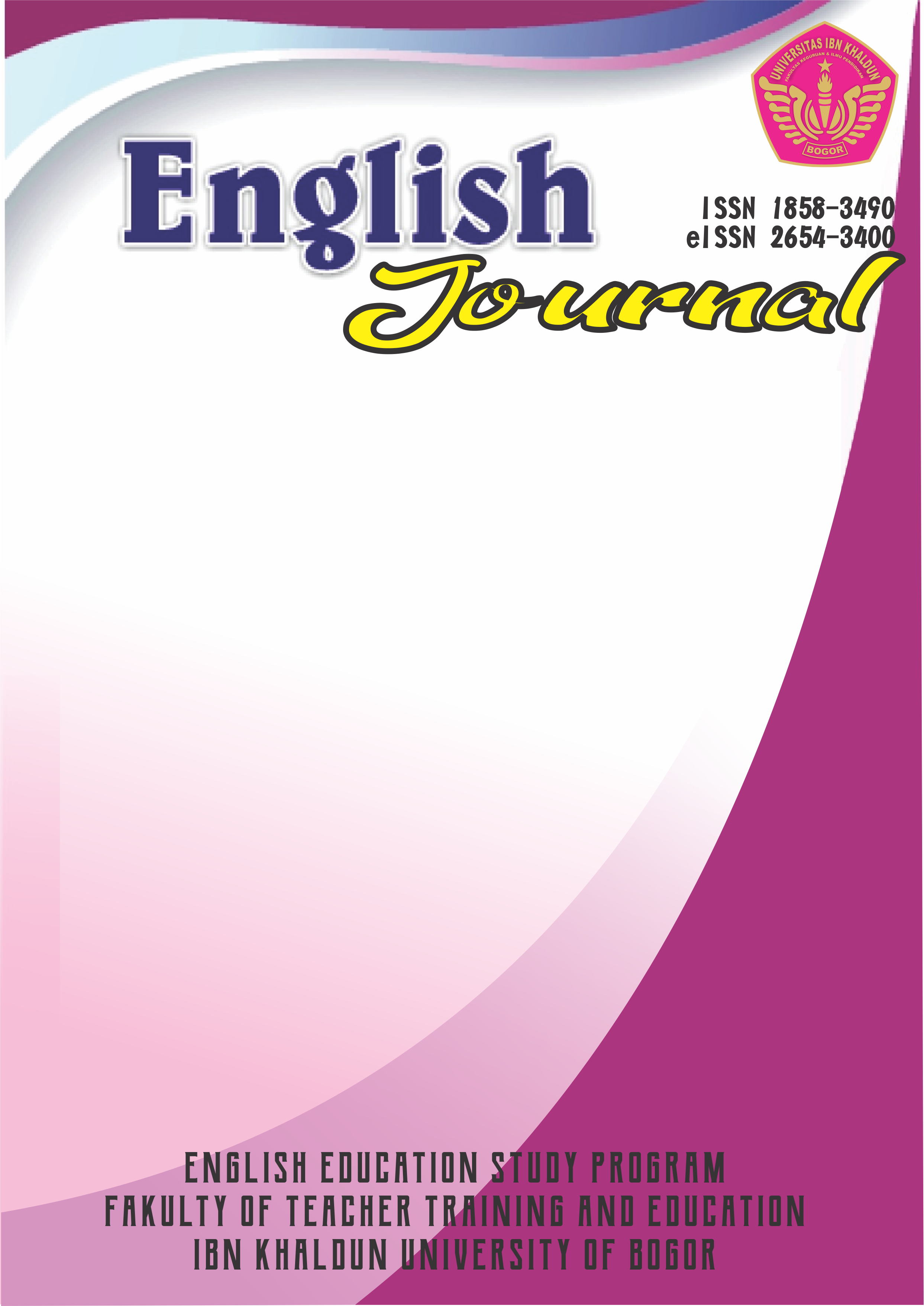MOTIVATING STUDENTS TO SPEAK THROUGH CONTEXTUAL TEACHING LEARNING
DOI:
https://doi.org/10.32832/english.v12i1.3768Abstract
This study investigated students"Ÿ motivation in speaking through Contextual Teaching Learning (CTL) at a junior high school in Bogor, West Java. The procedures of action research: plan, act, observe, reflect, and revise were used to investigate the participants"Ÿ learning activities and motivation. The study was conducted in two cycles involving two on-site English teachers. Data were collected through the teacher's journal, observers"Ÿ sheets, students"Ÿ diaries, and questionnaires. The results of the research indicated that students"Ÿ motivation in speaking could be improved through exposure to a variety of learning activities that connect the learning activities to the students"Ÿ lives and experiences. Finally, the results of the study are expected to have a contribution to developing students to be motivated language learners.References
Berns, R. G., & Erickson, P. M. (2001). Contextual Teaching and Learning: Preparing Students for the New Economy. The Highlight Zone: Research @ Work, 5, 2-9. (ERIC Document Reproduction Service No. ED452376) at http://www.cccbsi.org/Websites/basicskills/Images/CTL.pdf [ February 2, 2018]
Blackburn, B. R. (2005). Classroom Motivation from A to Z: How to Engage Your Students in Learning. Eye on Education.
Bong, M., & Clark, R. E. (1999). Comparison between self-concept and self-efficacy in academic motivation research. Educational Psychologist, 34, 139-153.
Borich, G.D. & Tombari, M.L. (1997). Educational Psychology: A Contemporary Approach (2nd. ed.). New York: Addison Wesley Longman, Inc at http://www.edb.utexas.edu/borich/edpsychtext.html [February 5, 2018]
Brand, B. (2003). Essentials of High School Reform: New Forms of Assessment and Contextual Teaching and Learning. Washington, D.C.: American Youth Policy Forum.
Bush, M, A. (2006). What Comes Between Classroom Community and Academic Emotions: „Testing a Self-Determination Model of Motivation in the College Classroom"Ÿ. A Dissertation: The University of Texas at http://www.lib.utexas.edu/etd/d/2006/ bushd55031/ bushd55031.pdf [January 11, 2018]
Coles, P., & Quirke, P. (2001). Professional Development through the Action Learning Gateway. Thailand TESOL Newsletter. 15(2), 14-20.
Dörnyei, Z. (1998). "Motivation in Second and Foreign Language Teaching”. Language Teaching, 31(3), 117-135.
Dörnyei, Z. (2001). Teaching and Researching Motivation. Harlow, England: Longman.
Dörnyei, Z. (2003). Attitudes, Orientations, and Motivations in Language Learning: Advances in Theory, Research, and Applications. Language Learning, 53 (1). 3-32.
Ferrance, E., (2000). Action Research. Brown University at http: // www. alliance. brown.edu/pubs/themes_ed/act_research.pdf [February 7, 2018]
Gardner, R. C (1985). Social Psychology and Second Language Learning: The Role of Attitudes and Motivation. London: Edward Arnold.
Hoyenga, K. B., & Hoyenga, K. T. (1984). Motivational Explanations of Behavior. Monterey, CA: Brookes/Coles Publishing Company.
http://education.calumet.purdue.edu/vockell/EdPsyBook_intrinsi.htm [February 5, 2018]
Jane, E. B. (2001). The Use of Cooperative Learning Techniques in a Community College Course. Dissertation, MAdEd, St. Francis Xavier University, Canada.
Johnson, B.E., (2002). Contextual Teaching and Learning: What Is It and Why Is It Here to Stay. Thousand Oaks, California: Corwin Press Inc. A Sage Publication Company.
Jordan, R.R. (1990). Pyramid Discussions. English Language Teaching Journal 44, 1: 46-54 at http://users.sch.gr/konsfig/speakinghalfassgn.pdf [February 4, 2018]
Lynch, R. L., & Harnish, D. (2003). Implementing Contextual Teaching and Learning by Novice Teachers. Occupational Research Group, College of Education, Athens: The University of Georgia at www.coe.uga.edu/ctl/casestudy/Final.pdf[February 4, 2018]
Oxford, R. & Shearin, J. (1994). "Language Learning Motivation: Expanding the Theoretical Framework”. The Modern Language Journal. 78(1), 12-28.
Peck, S. (1996). "Language Learning Diaries as Mirrors of Students"Ÿ Culture Sensitivity”. In K.M. Bailey and D. Nunan (Eds.), Voice from the Language Classroom ( pp.236-247). Cambridge, Cambridge University Press.
Rost, M., (2006). Generating Students"Ÿ Motivation. Pearson Education, Inc, at http://www.pearsonlongman.com/ae/worldview/motivation.pdf[February 4, 2018]
Ryan, R. M., Deci, E. L. (2000). "Intrinsic and Extrinsic Motivations: Classic Definitions and New Directions”. Contemporary Educational Psychology 25, 54–67 (2000): University of Rochester at http:// www. psych. ro chester.edu/SDT/documents/2000_RyanDeci_IntExtDefs.pdf[February 4, 2018]
Sears, Susan. (2002). Contextual Teaching and Learning: A Primer for Effective Instruction. Bloomington, IN: Phi Delta Kappa Educational Foundation.
Shabir, M. (2017). Teaching Speaking by Context. English Journal. 20(1) at http://ejournal.uika-bogor.ac.id/index.php/ENGLISH/article/view/1515
Shindler, J. (2008). Transformative Classroom Management at http://www.calstatela.edu/faculty/jshindl/cm/Chapter14CooperativeLearning.htm.
Wallace, M. J. (1998). Action Research for Language Teachers. Cambridge, Cambridge University Press.

















1.png)




